Related Research Articles

Sierra Leone, officially the Republic of Sierra Leone, is a country on the southwest coast of West Africa. It shares its southeastern border with Liberia, and the northern half of the nation is surrounded by Guinea. Covering a total area of 71,740 km2 (27,699 sq mi), Sierra Leone has a tropical climate, with diverse environments ranging from savanna to rainforests. The country has a population of 7,092,113 as of the 2015 census. Freetown is the capital and largest city. The country is divided into five administrative regions, which are subdivided into 16 districts.
Sierra Leone first became inhabited by indigenous African peoples at least 2,500 years ago. The Limba were the first tribe known to inhabit Sierra Leone. The dense tropical rainforest partially isolated the region from other West African cultures, and it became a refuge for peoples escaping violence and jihads. Sierra Leone was named by Portuguese explorer Pedro de Sintra, who mapped the region in 1462. The Freetown estuary provided a good natural harbour for ships to shelter and replenish drinking water, and gained more international attention as coastal and trans-Atlantic trade supplanted trans-Saharan trade.

The Vai are Mandé peoples that live mostly in Liberia, with a small minority living in south-eastern Sierra Leone. The Vai are known for their indigenous writing system known as the Vai syllabary, developed in the 1820s by Momolu Duwalu Bukele and other Vai elders. Over the course of the 19th century, literacy in the writing system became widespread. Its use declined over the 20th century, but modern computer technology may enable a revival.

Sengbe Pieh, also known as Joseph Cinqué or Cinquez and sometimes referred to mononymously as Cinqué, was a West African man of the Mende people who led a revolt of many Africans on the Spanish slave ship La Amistad in July 1839. After the ship was taken into custody by the US Revenue-Marine, Cinqué and his fellow Africans were eventually tried for mutiny and killing officers on the ship, in a case known as United States v. The Amistad. This reached the U.S. Supreme Court, where Cinqué and his fellow Africans were found to have rightfully defended themselves from being enslaved through the illegal Atlantic slave trade and were released. The US government did not provide any aid to the acquitted Mende People. The United Missionary Society, a black group founded by James W.C. Pennington, helped raise money for the return of thirty-five of the survivors to Sierra Leone in 1842.
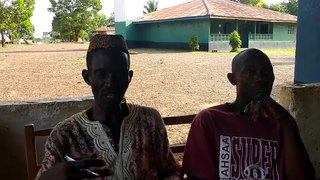
The Vai language, also called Vy or Gallinas, is a Mande language spoken by the Vai people, roughly 104,000 in Liberia, and by smaller populations, some 15,500, in Sierra Leone.

Anthony William Gardiner served as the ninth president of Liberia from 1878 until 1883. He was the first of a series of True Whig presidents who held power uninterruptedly until 1980.
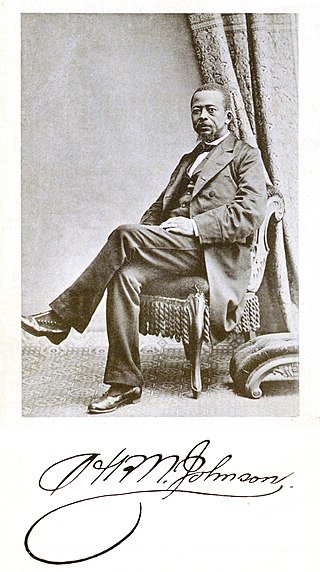
Hilary Richard Wright Johnson served as the 11th president of Liberia from 1884 to 1892. He was elected four times. He was the first Liberian president to be born in Africa. He had served as Secretary of State before his presidency, in the administration of Edward James Roye.
Sigismund Wilhelm Koelle or Kölle was a German missionary working on behalf of the London-based Church Missionary Society, at first in Sierra Leone, where he became a pioneer scholar of the languages of Africa, and later in Constantinople. He published a major study in 1854, Polyglotta Africana, marking the beginning of serious study by Europeans of African languages.
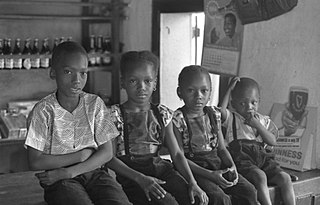
The Temne, also called Atemne, Témené, Temné, Téminè, Temeni, Thaimne, Themne, Thimni, Timené, Timné, Timmani, or Timni, are a West African ethnic group, They are predominantly found in the Northern Province of Sierra Leone. Some Temne are also found in Guinea. The Temne constitute the largest ethnic group in Sierra Leone, at 35.5% of the total population, which is slightly bigger than the Mende people at 31.2%. They speak Temne, a Mel branch of the Niger–Congo languages.

Cape Mesurado, also called Cape Montserrado, is a headland on the coast of Liberia near the capital Monrovia and the mouth of the Saint Paul River. It was named Cape Mesurado by Portuguese sailors in the 1560s. It is the promontory on which African-American settlers established the city now called Monrovia on 25 April 1822.
The Manes, Mani or Manneh were invaders who attacked the western coast of Africa in what is now Guinea, Liberia and Sierra Leone throughout much of the sixteenth century.
The history of African-American settlement in Africa extends to the beginnings of ex-slave repatriation to Africa from European colonies in the Americas.
Gola is a language of Liberia and Sierra Leone. It was traditionally classified as an Atlantic language, but this is no longer accepted in more recent studies.
Nathaniel Varney Massaquoi (1905–1962) was a Liberian educator and politician, from the Vai community.
The Gallinas River in Sierra Leone reaches the Atlantic between Cape Saint Ann and Grand Cape Mount.

Momulu Massaquoi (1869–1938) was a Liberian politician, diplomat, and monarch of the Vai people of Sierra Leone and Liberia. He served as Liberia's consul general to Germany 1922–1930, and appears to be the first indigenous African diplomat to modern Europe.

Fatima Massaquoi-Fahnbulleh was a Liberian writer and academic. After completing her education in the United States, she returned to Liberia in 1946, making significant contributions to the cultural and social life of the country.
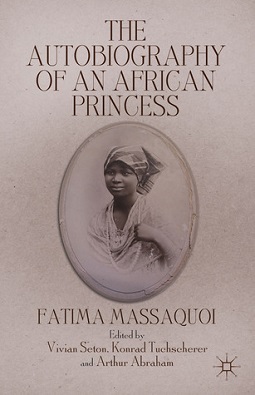
The Autobiography of an African Princess, published in 2013, is an account of the early years (1912–1946) in the life of Fatima Massaquoi, a descendant of the royal families of the Gallinas from Sierra Leone and Liberia. It describes her early childhood in Africa, her schooling in Germany and Switzerland and her university studies in the United States.

The geology of Sierra Leone is primarily very ancient Precambrian Archean and Proterozoic crystalline igneous and metamorphic basement rock, in many cases more than 2.5 billion years old. Throughout Earth history, Sierra Leone was impacted by major tectonic and climatic events, such as the Leonean, Liberian and Pan-African orogeny mountain building events, the Neoproterozoic Snowball Earth and millions of years of weathering, which has produced thick layers of regolith across much of the country's surface.
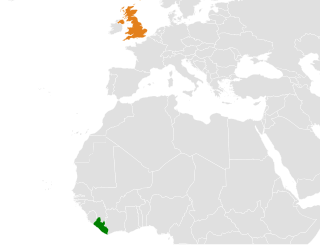
Liberia–United Kingdom relations refer to the bilateral relations between Liberia and the United Kingdom. The United Kingdom was the first country to recognize Liberian independence. Liberia has a history of border disputes with the British Colony of Sierra Leone, as well as cumbersome British loans which have at times compromised Liberian sovereignty.
References
- ↑ "Vai people" in Britannica
- ↑ S.W. Koelle (1854) Outlines of a grammar of the Vei language, together with a Vei-English vocabulary, p.3
- ↑ Monday B. Abasiattai (1988). African resistance in Liberia: the Vai and the Gola-Bandi. Liberia Working Group. p. 45.
- ↑ Sir E. Hertslet (13 May 2013). The Map of Africa by Treaty. Routledge. pp. 108–. ISBN 1-136-01862-X.